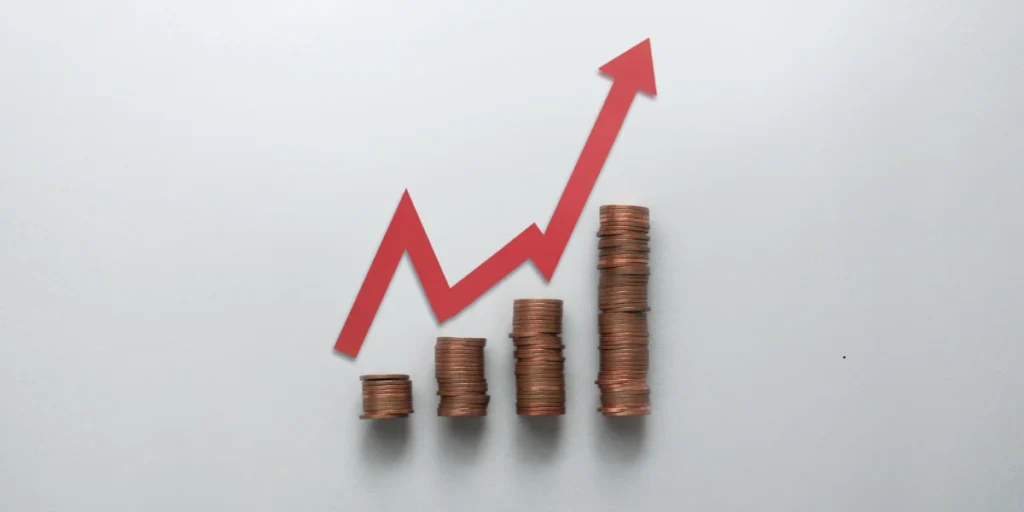The Reserve Bank of Australia’s (RBA) interest rate remains steady at 3.6 per cent , despite millions of Australian homeowners hoping for further relief. This pause in rate cuts comes after three reductions earlier this year, which have already provided significant financial breathing room for mortgage holders nationwide.
Following the RBA interest rate decision today, Treasurer Jim Chalmers acknowledged that, although the announcement wasn’t what many homeowners had wanted, it aligned with market and economist expectations. However, the previous cuts have not been insignificant—households with a $700,000 mortgage are now saving approximately £330 monthly, or about £4,000 annually. Meanwhile, the RBA interest rate meeting took place against a backdrop of inflation at 3.0 per cent in August, precisely at the upper limit of the central bank’s target range.
The impact of earlier RBA rate cuts this year is already evident in the property market, with housing values rising 0.5 per cent last month to reach a new record high. Despite the pause in the easing cycle, property prices have jumped 5.3 per cent over the past year, pushing the median Australian home value to £835,000. At the same time, annual loan growth has accelerated to 7.2 per cent—the fastest rate since the global financial crisis outside pandemic conditions.
Pause on Interest Rate Cuts in September

The RBA board’s unanimous decision to keep interest rates on hold reflects a cautious approach amid mixed economic signals and concerns about inflation. Central bankers acknowledged that although inflation has fallen substantially since its peak in 2022, the decline in underlying inflation has slowed in recent months.
Inflation Close to Range Peak
Recent data suggest that inflation in the September quarter may exceed previous forecasts. The monthly Consumer Price Index rose to 3.0% in August from 2.8% in July, sitting precisely at the upper limit of the RBA’s target band. Consequently, this has legitimised the more cautious faction of the Monetary Policy Board, which favours a data-driven approach to decision-making. The Board noted that both headline and trimmed mean inflation were within the 2-3% range in the June quarter; however, recent indicators suggest persistent inflationary pressures in certain areas.
Economic Recovery Shows Uneven Momentum
Economic data reveal a somewhat contradictory picture. The June quarter showed private demand recovering more rapidly than expected, with GDP growing by 0.6% and annual growth reaching 1.8%. Additionally, private consumption is increasing as real household incomes rise and financial conditions improve. Nevertheless, business investment remains a weak spot, falling 0.1% in the June quarter and showing merely 0.1% growth year-on-year. Moreover, productivity growth remains weak, with labour costs remaining high.
RBA Holds Steady with Data-Led Caution
Governor Michele Bullock and the Board emphasised the need to remain prudent given the heightened uncertainty. The RBA statement noted: “With signs that private demand is recovering, indications that inflation may be persistent in some areas and labour market conditions overall remaining stable, the Board decided that it was appropriate to maintain the cash rate at its current level”. Furthermore, the Board stressed it remains vigilant and “well placed to respond decisively to international developments”. The RBA will primarily focus on upcoming inflation data, with markets still pricing in one more cut before year-end.
How The Rate Hold Affects Australian Households

Mortgage holders across Australia face another month without payment relief as the RBA keeps the cash rate steady. This decision comes during a period when many households continue to experience budget pressures, albeit with some easing for specific segments of the population.
No Relief For Mortgage Holders This Month
Australian borrowers hoping for further reductions to their monthly repayments will now have to wait longer for additional relief. The steady cash rate means variable mortgage rates will remain unchanged for now, extending the current financial pressure on households. Financial markets had priced in less than an 8% chance of a cut at the September meeting, suggesting most analysts anticipated this outcome. Presently, the RBA has indicated it will maintain a “wait and see” approach, carefully monitoring upcoming inflation data and labour market trends before making its next move.
Savings From Past Cuts Ease Pressure
Despite today’s hold decision, previous rate reductions have provided tangible benefits. A household with a $1,070,293 mortgage has already saved $203.36 on its mortgage interest costs since rates started falling in February. By Christmas, the same household will have saved an additional $201.84, totalling approximately $405.19 in relief. Notably, the household saving ratio jumped to 5.2% in the March 2025 quarter, up significantly from 3.8% in December, indicating many Australians are banking their savings rather than spending them.
Commonwealth Bank data reveals only 11% of its mortgage holders reduced their repayments after the Reserve sliced rates in August. First home buyers were least likely to lower payments, with just 8% taking this option. Instead, most borrowers are maintaining their original repayment levels, essentially building additional financial buffers.
Related Article: Mortgage Calculator UK: Estimate Your Monthly Payments with Ease
Variable-Rate Borrowers Urged to Compare Lenders
Given that the cash rate remains unchanged, financial experts recommend borrowers actively seek better deals. The average interest rate for new variable loans has decreased by 0.53%, and by 0.58% for existing loans, over the past year. A borrower with a $917,394 loan is now saving about $417.41 per month since the RBA began lowering rates.
Specifically, 71 lenders are now offering rates at 5.99% or lower, with the lowest variable home loan rate available at 5.13% p.a.. According to personal finance experts, “Homeowners should be keeping a very close eye on their lender’s response to the RBA moves and be prepared to make the switch or at least try to negotiate if they don’t see the full benefit of further cuts”.
What Economists and Markets Expect Next

Financial analysts remain divided on the timing of the next RBA interest rate cut following today’s hold decision.
Markets Expect One Last Cut This Year
Most economists expect the RBA statement to deliver one more 0.25% reduction by December, bringing the cash rate to 3.35%. Currently, three of Australia’s big four banks—ANZ, CBA, and Westpac—forecast a November cut. In contrast, NAB recently reversed its position, now predicting no further easing until May 2026. This shift followed August’s higher-than-expected inflation data, which suggested core inflation may be more persistent than previously anticipated.
Quarterly CPI Data in October Could Shift Outlook
The upcoming quarterly inflation figures, scheduled for release on October 29, will prove crucial for the RBA interest rate decision path. Recent monthly indicators suggest that the September quarter inflation may reach 2.8-2.9%, potentially exceeding the RBA’s projection of 2.6%. This data will significantly influence the outcome of the November RBA interest rate meeting. As one analyst noted, a November cut remains a “live option” with approximately a 70% probability, yet it depends entirely on these forthcoming figures.
RBA Governor to Address Future Policy Direction
Governor Michele Bullock is expected to provide additional context at today’s press conference. The RBA has maintained it will remain “attentive to data and the evolving assessment of outlook and risks”. Bullock recently described Australia’s economic situation as “not just uncertain, but actually unpredictable”, emphasising the board’s readiness to “do what it considers necessary” to balance price stability and employment goals.
Impact on Housing and Credit Markets
Australia’s property market demonstrates remarkable resilience amid the RBA interest rate pause, with multiple indicators pointing to sustained strength, regardless of monetary policy adjustments.
Housing Values Rise Eighth Consecutive Month
The latest PropTrack Home Price Index confirms that August marked the eighth consecutive month of nationwide property price growth. Home values increased 0.5% last month, pushing the annual growth rate to 5.3%. The median Australian home value now stands at AUD 1,276,706.84—a fresh record high. Regionally, Sydney remains the most expensive capital city, followed by Perth and Brisbane, with Darwin, Perth and Brisbane recording the most significant annual price increases. Correspondingly, the mean price of residential dwellings rose by AUD 21,558.76 to AUD 1,554,524.37 in the June quarter.
Credit Growth Hits Post-GFC Highs
Notwithstanding higher borrowing costs, housing credit growth has accelerated to levels above its post-global financial crisis (GFC) average. Compared to its mid-2023 trough, housing credit growth has increased by two percentage points. The June quarter saw total demand for credit reach AUD 132.26 billion, with households borrowing AUD 84.40 billion. Interestingly, whereas owner-occupier borrowing shows signs of moderation, investor credit continues its upward trajectory.
Supply Constraints Drive Price Growth
A chronic housing undersupply estimated at 200,000-300,000 dwellings underpins ongoing price increases. Australia requires approximately 170,000 new dwellings annually just to keep pace with demand, yet current approval rates fall short of this target. The RBA acknowledges this fundamental imbalance between supply and demand, expecting the supply response to materialise gradually due to persistently low approval rates.
Conclusion – RBA Interest Rate
An important turning point in Australia’s economic history was reached when the Reserve Bank of Australia decided to keep interest rates at 3.6%. Although this RBA interest rate pause disappoints many homeowners hoping for further relief, earlier reductions have already delivered substantial benefits. Families with large mortgages now enjoy savings approaching £4,000 annually, providing much-needed financial breathing room during challenging times.
Nevertheless, the RBA interest rate meeting stems from legitimate concerns. With inflation precisely at the upper limit of its target band, mixed economic indicators, and persistent inflationary pressures in specific sectors, the central bank seems justified in its prudent stance. Furthermore, though GDP growth has reached 1.8 per cent annually and private consumption shows improvement, weak business investment and productivity remain problematic.
Meanwhile, Australia’s property market remains remarkably resilient despite the RBA interest rate pause. Property values have risen for eight consecutive months, pushing the median Australian home value to a record £835,000. Credit growth has accelerated to post-GFC highs, demonstrating robust housing market activity despite monetary policy adjustments.
Undoubtedly, Australian households must adjust to this economic reality. Although today’s decision offers no immediate relief, previous cuts have already significantly eased financial pressure. Savvy borrowers should therefore actively compare lenders, considering that 71 institutions now offer rates below 5.99%. The RBA, meanwhile, stands ready to respond decisively should economic conditions change, balancing price stability against employment concerns as Australia navigates these unpredictable economic waters.
What was the RBA statement on interest rates in September?
The Reserve Bank of Australia (RBA) decided to keep the interest rate steady at 3.6 per cent in September, despite expectations from some homeowners for further rate cuts.
How have previous rate cuts affected Australian households?
Earlier rate reductions this year have provided significant financial relief. For instance, households with a £ 700,000 mortgage are now saving approximately £330 per month, or about £4,000 annually.
What factors influenced the RBA’s decision to hold rates?
The decision was influenced by inflation remaining near the top of the target range, uneven economic recovery, and the need for a data-driven approach to monetary policy.
How is the Australian housing market performing despite steady rates?
The housing market remains resilient, with property values rising for eight consecutive months. The median Australian home value has reached a new record high of £835,000, showing a 5.3 per cent increase over the past year.






